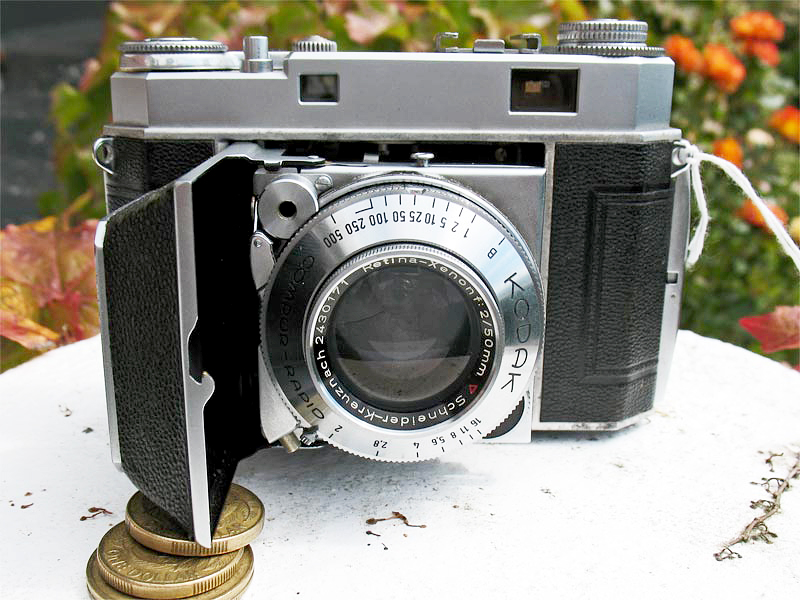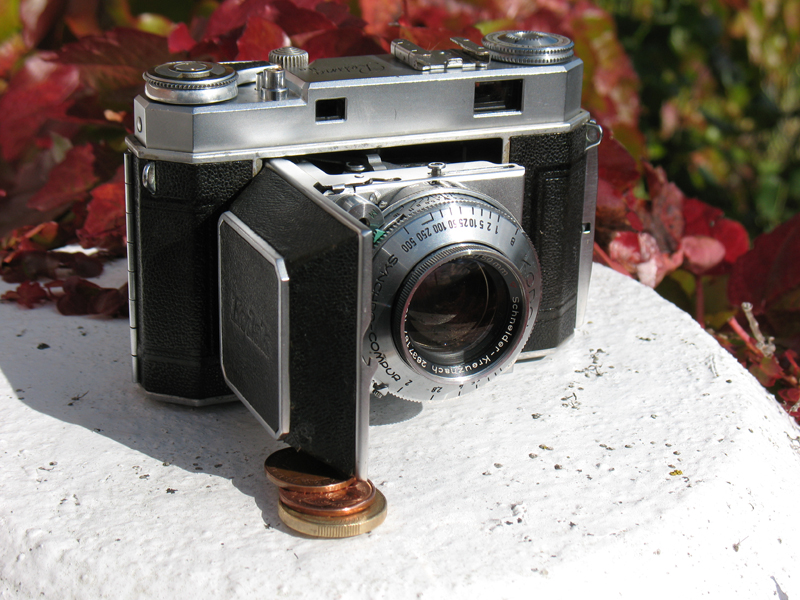Chris's camera pages
Kodak Retina IIa (type 016)

Manufactured from 1951 to 1954. This compact and robust folding 35mm rangefinder camera was available with either a Rodenstock Heligon or Schneider Xenon f/2 lens.
The Retina IIa and Retina Ia cameras were the first of the Retina line to automatically cock the shutter when the film was advanced, all the previous models required you to cock the shutter manually for each exposure.They were also the first successful lever-advance models, the much earlier type 122 Retina II also had a lever to advance the film, but the mechanism was apparently prone to problems and the next Retinas featured knob-advance again. This is a popular model with both collectors and users. Many photographers much prefer the conventional position of the film advance lever at top right-hand side, over the bottom-mounted lever on later Retina models. The earliest examples of this model were fitted with a flash synched Compur-Rapid shutter, but most of the production is fitted with a Synchro-Compur shutter. Early models, like the one pictured above, had the film reminder dial below the rewind knob, while the later types had it incorporated into the rewind knob as on the later Retina models as pictured below.

Unlike later Retina models, the lenses on the Retina IIa were not interchangeable, though you may occasionally see sets of aftermarket "front converter" lenses advertised with a IIa. An urban myth has grown up around the Retina IIa. It is commonly stated that the Retina IIa suffered from problems related to a weak, or fragile, shutter-cocking rack. In fact his model does not have a weak shutter-cocking rack, that particular problem only surfaced with the Retina IIIc type and later cameras. Actually, I cannot remember having to replace the cocking rack in a Retina IIa in many, many years. The most common faults in Retina IIa cameras coming my way for repair are those that all older cameras tend to suffer from, gummed-up shutters, sticky or misadjusted rangefinders, and dried-out grease in the focus helical. Problems specific to this model are a broken frame counter spring, sometimes referred to as the counter pawl, much less often I see a shutter that will not stay cocked because a tiny spring in the flash synch mechanism has broken. Less frequently again, I see Retina IIa cameras with a broken gear on the top of the film sprocket shaft. That particular fault is almost certainly associated with incorrect film loading, or failure to depress the film rewind button before rewinding.